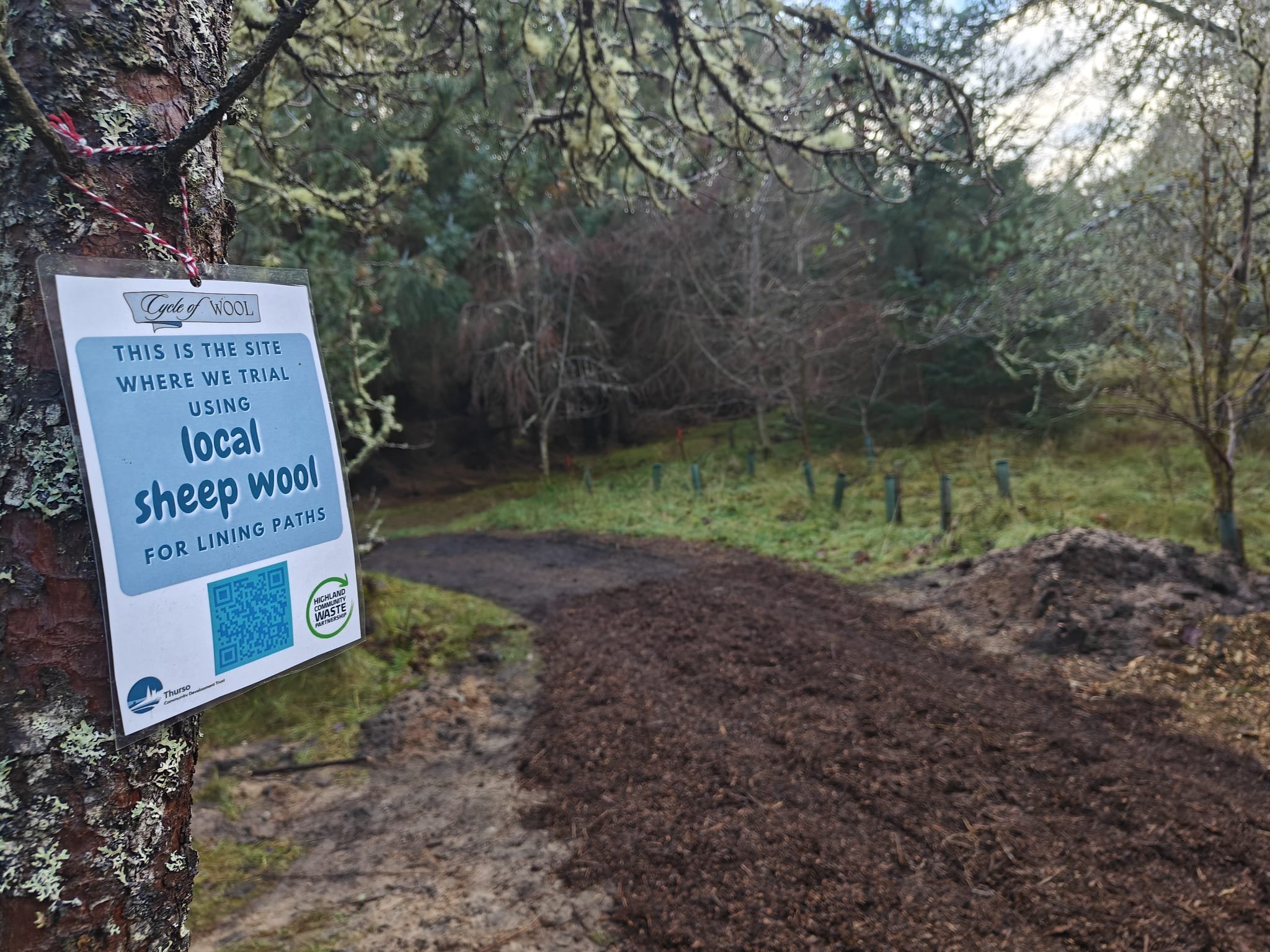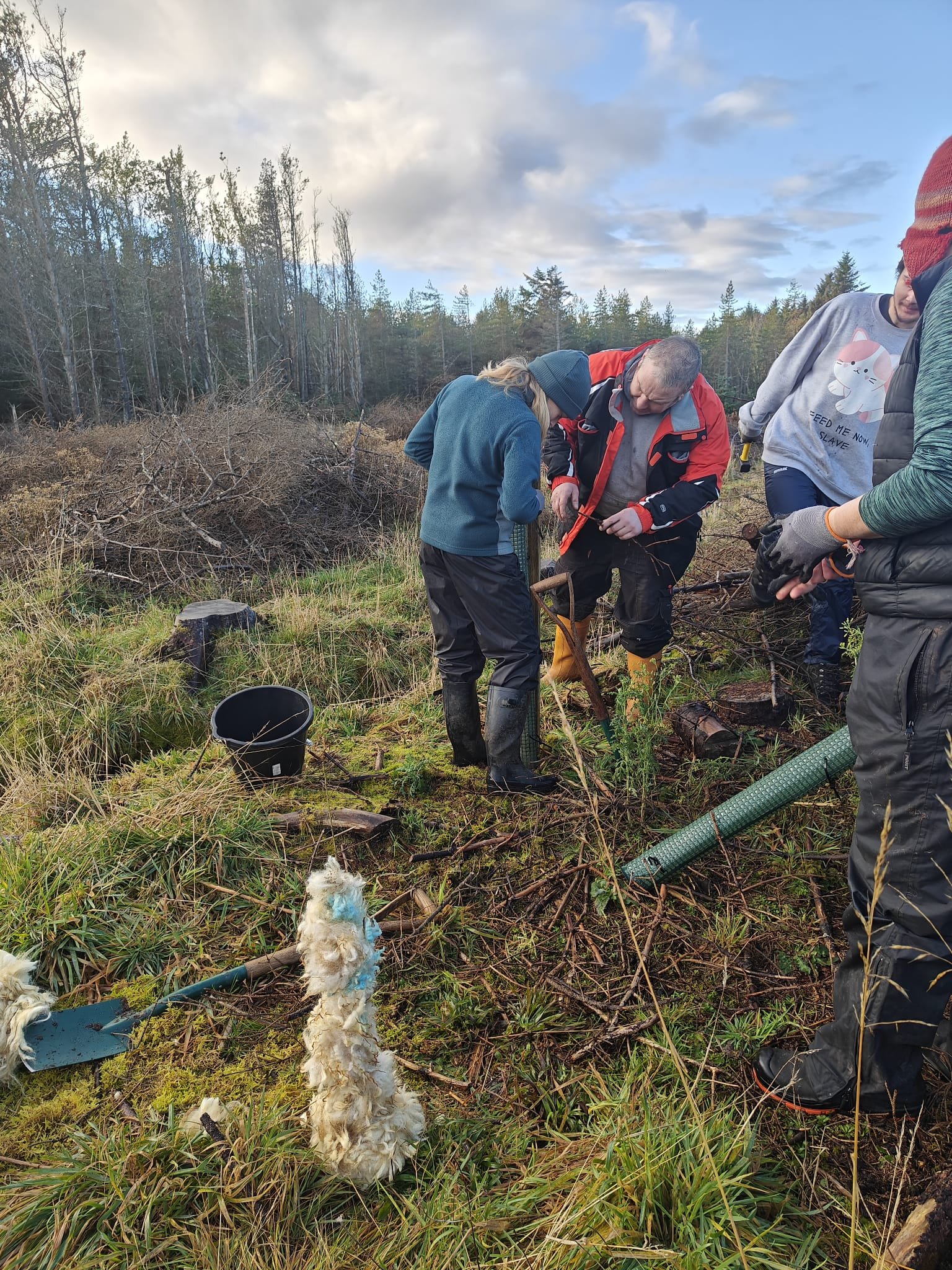In November 2024, we set up collaboration with Dunnet Community Forest (DCF), to trial using sheep wool to line paths.
The network of paths at Dunnet Forest is large and mainly not covered with any substrate.
Paths are maintained by DCF Development Officer Garance Warburton and her dedicated team of volunteers.
Some sections of paths get very muddy in wet weather, and those patches of paths are covered with woodchip which is produced locally at the DCF.
While woodchip is a great resource because it is local and comes at next to no cost, apart from running costs of the chipping machine, the results of its use are not ideal.
Woodchip gets quickly mixed with mud and eventually sinks in it, leaving the path messy again. To maintain such segments of the paths walkable, DCF team have to add woodchip repeatedly during the season.
We selected a wet segment on a busy forest path to be our experimental site for using sheep wool as the lining substrate.
Lead by DCF Development Officer Garance, the team of volunteers dug a shallow trench (10-15 cm) and reinforced it with the wooden formwork.
Then we filled the trench with sheep fleeces which we tightly rolled into bobbins and laid tightly next to each other. Then we put several layers of spread fleeces on top, to make the surface even and fill any gaps.
After that, we all did a little dance to compact our woolly cushion.
For this project, we utilized the wool of lowest grade - it was contaminated with sheep poo. It was also sheared in the previous season so already started felting due to long storage.
Such wool is not suitable for crafting or house insulation, but works ideally in gardening projects or for building paths!
After compacting the wool (it still felt very bouncy and was spilling from the formwork) we poured woodchip over it generously and compacted the mended path again.
Successful test drive over in a local Kubota buggie completed our works on the site.
We revisited the experimental path in March 2025 and found it in excellent condition - with no maintenance over the winter at all!
Though the winter 2024-2025 was not extremely humid and did not put our woolly path to the most harsh test, other muddy segments on DCF paths were muddy and needed a couple of woodchip “refills“ over the winter months.
The team and the Board of Dunnet Forest are happy with these results and plan to apply this technique to as many paths as possible in future.
These are the images taken in March 2025:
We are so grateful for support and generosity of our local farmers, that enabled us to implement this project!
Another line of work that we carried out at DCF was protection of the oak saplings with wool.
Young trees need protection not only from the elements, but also from - and mainly - from wildlife that don’t mind snacking on the gentle baby trees or their bark. Sheep wool is known to deter deer and it is also effective against rabbits.
In the experimental patch, we left some saplings free from wool, others were wrapped in wool and placed into protection plastic tubes, and others were only wrapped in wool.
We paid baby oaks a visit in March 2025, and though it was still early to expect green leaves, we could observe swollen buds on all saplings. Therefore we are happy to state that all trees in the experimental group survived the winter, and future months will show whether there will be any differences in their development rate.
However, already at this phase we can see that the trees protected by plastic tube and by wool only, survived the winter and potential attacks from deer and rabbits equally well, while benefits of a natural fully renewable and biodegradable material are obvious, especially when it is locally sourced, as the wool in our case.















